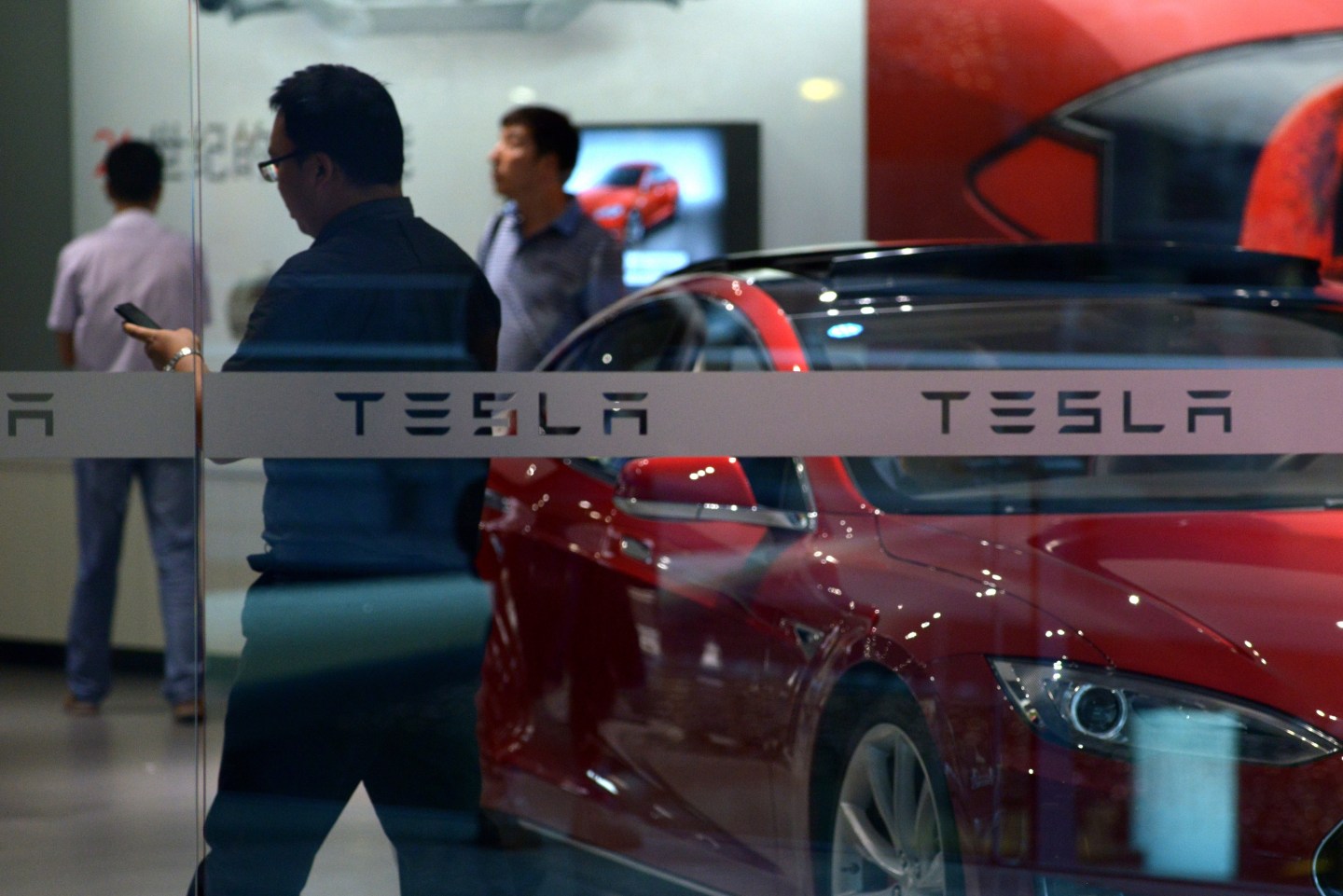Tesla Motors isn’t in Korea just yet. But a job posting for a vice president of sales for Japan and Korea hints at the luxury all-electric automaker’s expansionist ambitions.
Tesla (TSLA) is certainly considering Korea, but for now the company is focused on building out its supercharger and destination charger network, as well as other infrastructure in existing Asian markets such as Japan, China, and Hong Kong, spokeswoman Alexis Georgeson told Fortune.
Tesla believes Asia—and China in particular—could become one of its largest markets within a few years. The company has said in previous quarterly reports that it plans to expand in China as quickly as possible.
Tesla’s foray into Asia began in April 2014 when it started delivering its Model S sedan to customers in China, and then to Japan by fall. In less than a year, Tesla has opened three stores, a service center, six free fast-charging stations known as superchargers, and 25 destination charging locations in Japan.
Its entry into China was more aggressive. Tesla, aiming to meet lofty sales goals, went on a hiring spree in China. The company eventually amassed a staff of 600 people, opened stores and service centers, and began an aggressive rollout of its network of superchargers and destination charging stations, which are located at hotels, shopping centers, and resorts frequented by Model S owners.
China proved to be a tougher market to conquer than initially anticipated. The company sold an estimated 3,500 cars in 2014, below its sales goal and behind electric and plug-in hybrid vehicles produced by Chinese rivals BYD and BAIC. Sales continued to lag in the beginning of 2015. Elon Musk, Tesla’s chairman, chief executive, and largest stockholder, has placed much of the blame on a misconception among Chinese consumers that charging is difficult there.
The weaker than expected sales led to executive turnover and a restructuring; hiring came to a stand still.
Today, Tesla’s Asia job postings paint a more hopeful picture of its future in the region. There are at least 60 open positions in China, mostly in Beijing, and around 35 or so in Japan. Those numbers don’t come close to the hundreds of positions in North America. Then again, it’s an uptick from the one lone job position in China—a massive economy of 1.35 billion people—that was posted back in March.
Dan Dolev, an analyst with Jefferies LLC, says concerns about sales in China are overblown. A Jefferies survey released this spring found Tesla could achieve its 2020 sales target of 500,000 cars a year in North America and Western Europe alone.
“Conquering China is a bigger long-term goal,” Dolev told Fortune. “They’re still plugging along in China and I don’t think they’ve turned the corner yet. But remember, the problem they have in China is not about demand, it was infrastructure, which they are fixing, and perception. So infrastructure is a good problem to have in the sense that once they get more stores, more service stations, more charging stations, things will turn around.”
So what about Korea? Dolev stresses that China is really the No. 1 priority in Asia, although he expects eventually the company will expand there.
He compares the market in Korea to that of Norway, where the Model S became the top-selling car in 2014.
“Being the king of Norway, where the population is 5 million, doesn’t move the needle,” Dolev says. “Korea is 10 times bigger than Norway, but China is the real prize.”
